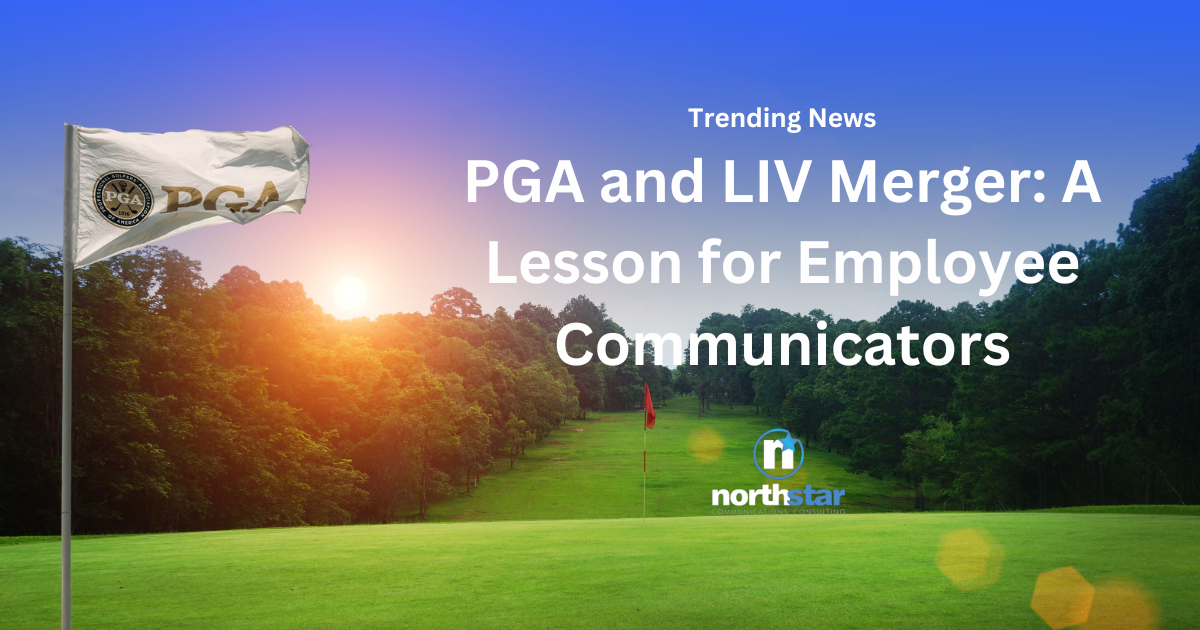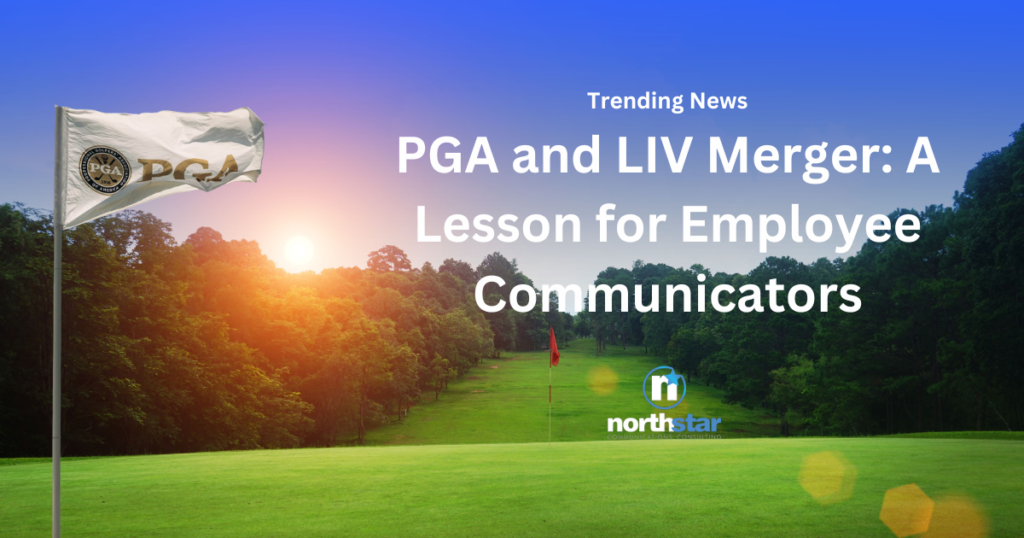
Tuesday’s merger announcement between the Professional Golfers’ Association (PGA) and Saudi-backed LIV, a start-up league, is creating all kinds of discord throughout the industry.
From those who have issues with how LIV is funded to legislators crying foul, the deal seems to be receiving – well – mixed results, to put it mildly.
A PR issue, you say? Indeed it is. But in this world of inside-out, outside-in communications, internal stakeholders can/could be used to strengthen support for the transaction, yet it appears that many were not. This makes “internal communications” part of the PR problem – and an even bigger issue for members of the tour.
Tiger Woods and Rory McIlroy were two PGA stars apparently surprised to learn the news, golf.com reports. And many others learned of the planned merger through social media. The explanation for surprising this key “internal” stakeholder set is confidentiality, which is a reasonable explanation for keeping the story closely held among a relatively small number of people.
The problem with that, of course, is that it doesn’t appear to show players that their respective organizations viewed them as a critical early communication priority. PGA Tour commissioner Jay Monahan held a players-only meeting at Oakdale Golf & Country Club in Toronto on Tuesday, but it appears not to have been enough to keep blindsided players from expressing their displeasure – publicly.
Recognizing that confidentiality ruled the day/s before this announcement, some strategies and tactics could have reduced the shock and negative sentiment with this communication.
- Place internal stakeholders as the primary communication targets. Even if they can’t be told in advance of any public disclosure, they should be personally informed at the same time that any press release goes out. Whether by text, email or any other form of communication, show them that they matter as much — or more — than any other stakeholder.
- Monahan indicated that many of the merger details are not yet final and that players would have opportunities to influence them. That’s the kind of detail that should have gone out immediately. When that first “internal” announcement goes out, acknowledge the reasons why you couldn’t give them advance notice and give them immediate “reasons to believe” — through content — that the proposed transaction holds good things for their futures. In fact, that first communication could even ask 1-2 questions to get an early read on sentiment, which would be used to guide follow up communication activities.
- Provide a live meeting opportunity for them to hear more context, rationale and expected results of the transaction. It should also be a venue for them to share feedback and ask questions.
- Continuous feedback loops are critical in the early days after a major announcement. Make sure you’ve got channels for internal stakeholders to share their reactions to the news and any additional context provided by leaders.
It certainly seems, at least in the early days after this announcement, that all parties to it will need to dig themselves out of a self-made, internal hole. Granted, the hole might still be there even if the communication strategy were adjusted to focus more on internal stakeholders. But with solid counsel from internal communications professionals, I’d bet it wouldn’t be –pardon the pun – subpar.


